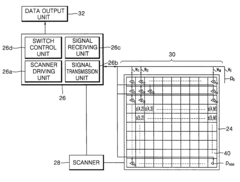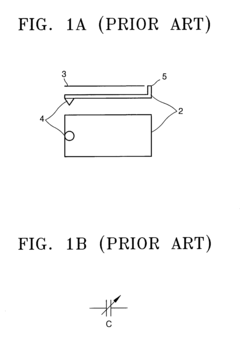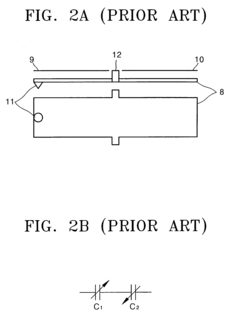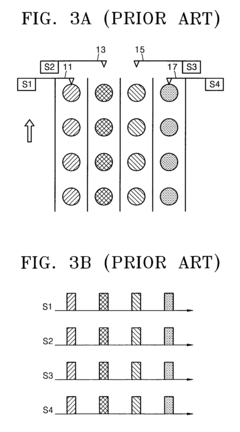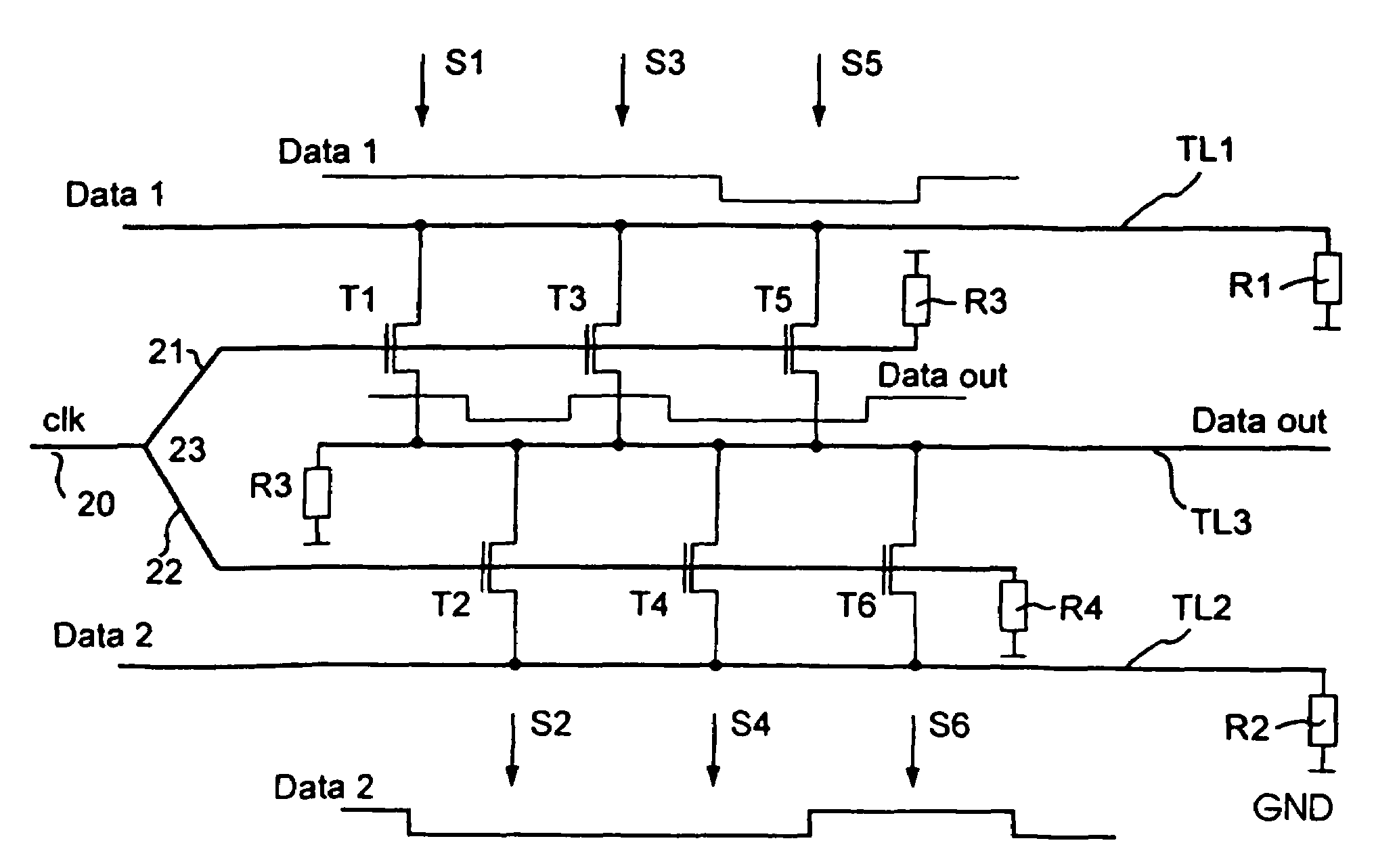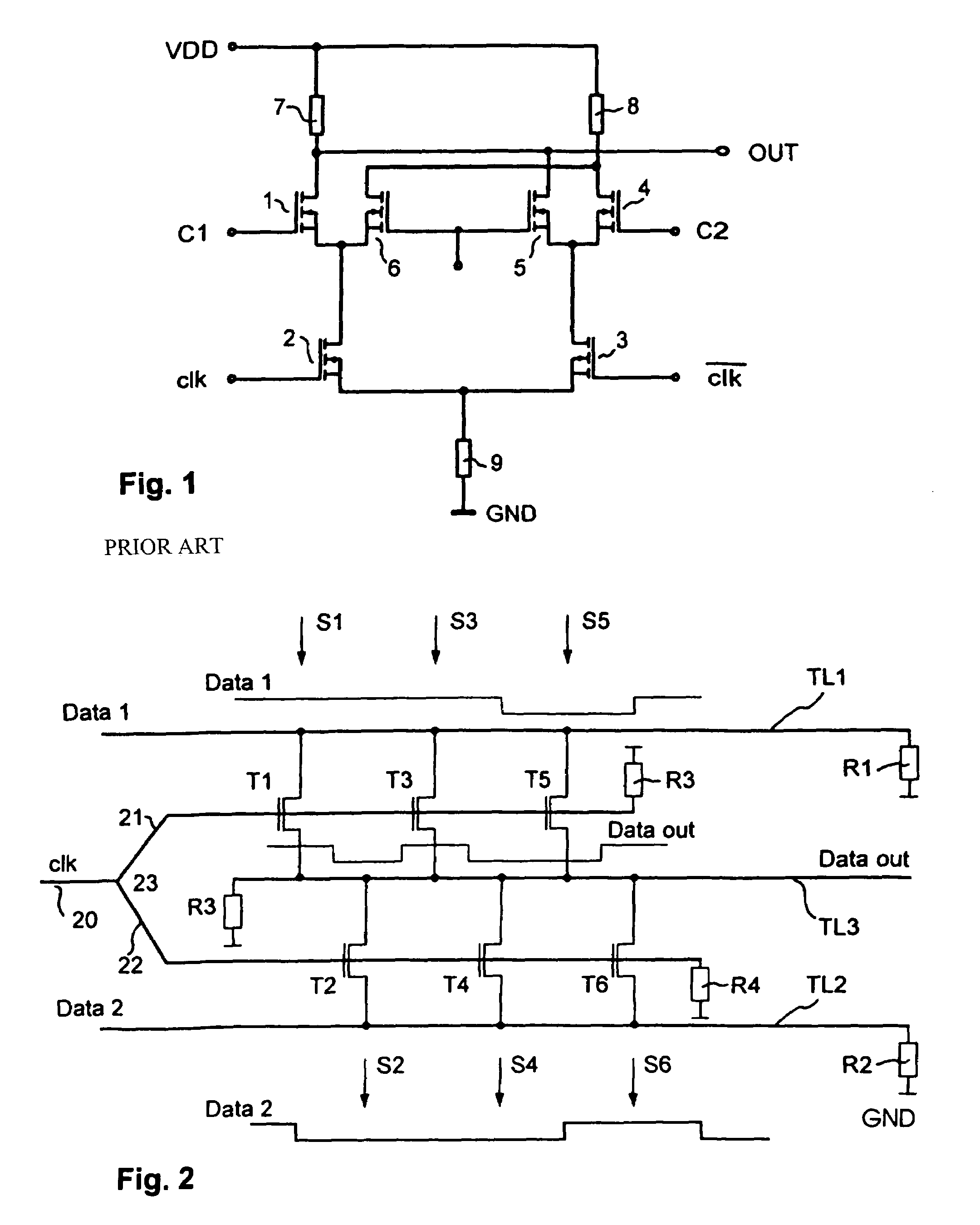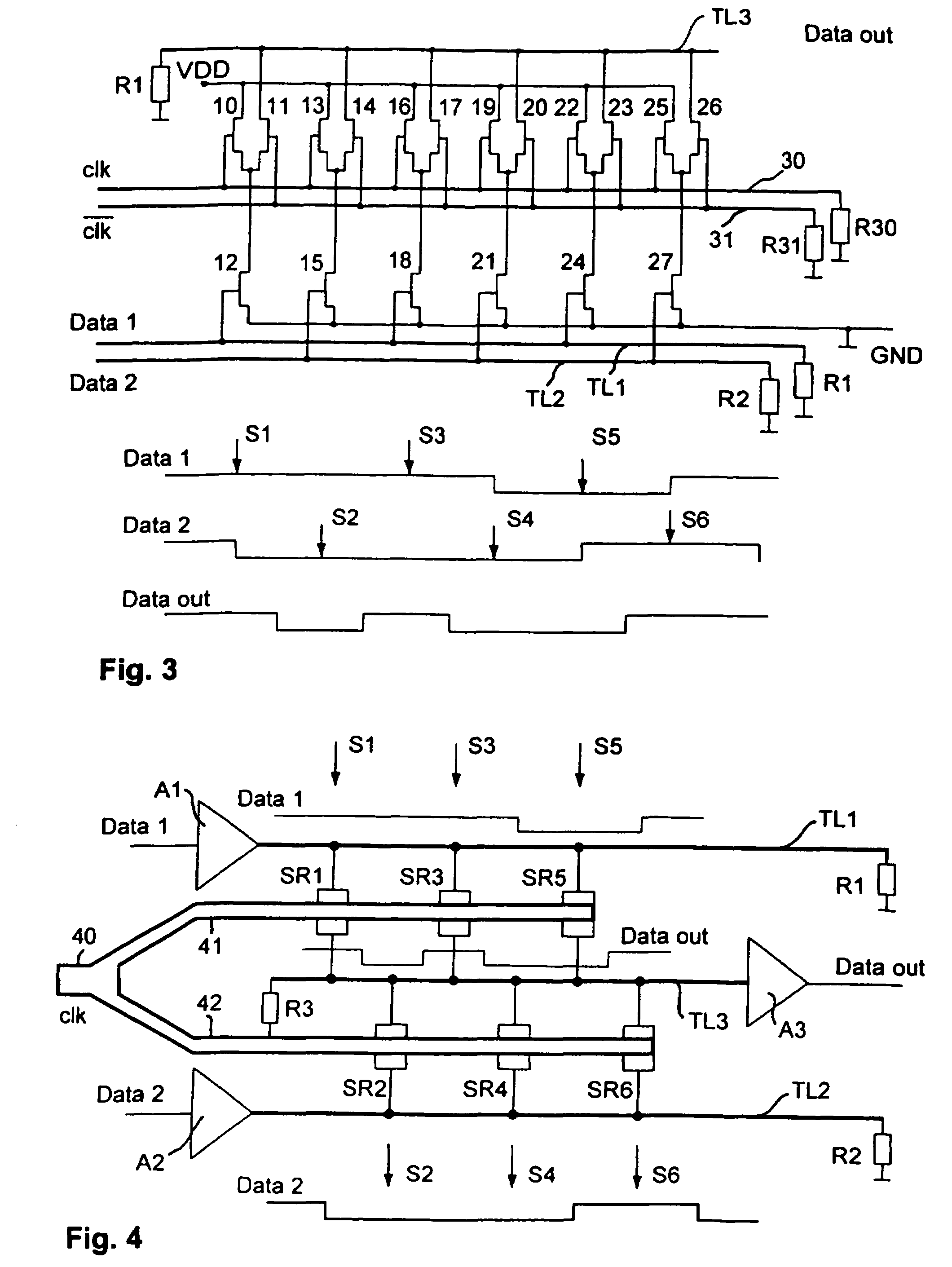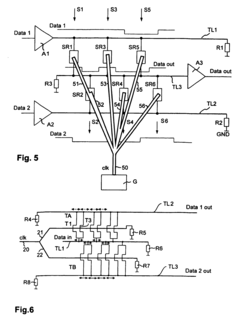How to Use Multiplexers for High-Density Data Applications?
JUL 13, 20259 MIN READ
Generate Your Research Report Instantly with AI Agent
Patsnap Eureka helps you evaluate technical feasibility & market potential.
Multiplexer Technology Evolution and Objectives
Multiplexer technology has undergone significant evolution since its inception in the mid-20th century. Initially developed for telecommunications, multiplexers have become integral components in various high-density data applications. The primary objective of multiplexer technology is to efficiently combine multiple input signals into a single output stream, thereby optimizing bandwidth utilization and reducing system complexity.
The evolution of multiplexers can be traced through several key stages. Early multiplexers were primarily analog devices, using frequency-division multiplexing (FDM) to combine signals. As digital technology advanced, time-division multiplexing (TDM) became prevalent, allowing for more efficient data transmission. The advent of statistical multiplexing in the 1970s marked a significant leap forward, enabling dynamic allocation of bandwidth based on traffic demands.
In recent years, the focus has shifted towards developing multiplexers capable of handling increasingly high data rates and complex signal types. Wavelength-division multiplexing (WDM) has emerged as a crucial technology in optical communications, allowing for the transmission of multiple data streams over a single fiber optic cable. This has dramatically increased the capacity of fiber optic networks, supporting the growing demand for high-bandwidth applications.
The objectives of modern multiplexer technology are multifaceted. Firstly, there is a continuous drive to increase data throughput and channel density. This is particularly crucial in data centers and telecommunications networks, where space and power efficiency are paramount. Secondly, reducing latency and improving signal integrity are key goals, especially in applications such as high-frequency trading and real-time data processing.
Another important objective is enhancing the flexibility and scalability of multiplexer systems. As data requirements evolve rapidly, multiplexers need to adapt to changing network configurations and data formats. This has led to the development of software-defined multiplexers, which offer greater programmability and easier integration with emerging network architectures.
Energy efficiency has also become a critical objective in multiplexer design. With the exponential growth of data traffic, reducing power consumption while maintaining high performance is essential for sustainable operation of large-scale data infrastructures. This has spurred research into low-power multiplexing techniques and more efficient signal processing algorithms.
Looking ahead, the evolution of multiplexer technology is closely tied to advancements in areas such as 5G networks, Internet of Things (IoT), and edge computing. These emerging technologies demand multiplexers capable of handling diverse data types, from high-bandwidth video streams to low-latency sensor data, often in real-time scenarios. As such, the ongoing development of multiplexer technology remains crucial in enabling the next generation of high-density data applications.
The evolution of multiplexers can be traced through several key stages. Early multiplexers were primarily analog devices, using frequency-division multiplexing (FDM) to combine signals. As digital technology advanced, time-division multiplexing (TDM) became prevalent, allowing for more efficient data transmission. The advent of statistical multiplexing in the 1970s marked a significant leap forward, enabling dynamic allocation of bandwidth based on traffic demands.
In recent years, the focus has shifted towards developing multiplexers capable of handling increasingly high data rates and complex signal types. Wavelength-division multiplexing (WDM) has emerged as a crucial technology in optical communications, allowing for the transmission of multiple data streams over a single fiber optic cable. This has dramatically increased the capacity of fiber optic networks, supporting the growing demand for high-bandwidth applications.
The objectives of modern multiplexer technology are multifaceted. Firstly, there is a continuous drive to increase data throughput and channel density. This is particularly crucial in data centers and telecommunications networks, where space and power efficiency are paramount. Secondly, reducing latency and improving signal integrity are key goals, especially in applications such as high-frequency trading and real-time data processing.
Another important objective is enhancing the flexibility and scalability of multiplexer systems. As data requirements evolve rapidly, multiplexers need to adapt to changing network configurations and data formats. This has led to the development of software-defined multiplexers, which offer greater programmability and easier integration with emerging network architectures.
Energy efficiency has also become a critical objective in multiplexer design. With the exponential growth of data traffic, reducing power consumption while maintaining high performance is essential for sustainable operation of large-scale data infrastructures. This has spurred research into low-power multiplexing techniques and more efficient signal processing algorithms.
Looking ahead, the evolution of multiplexer technology is closely tied to advancements in areas such as 5G networks, Internet of Things (IoT), and edge computing. These emerging technologies demand multiplexers capable of handling diverse data types, from high-bandwidth video streams to low-latency sensor data, often in real-time scenarios. As such, the ongoing development of multiplexer technology remains crucial in enabling the next generation of high-density data applications.
High-Density Data Market Analysis
The high-density data market has experienced significant growth in recent years, driven by the increasing demand for efficient data processing and transmission in various industries. This market segment encompasses applications that require handling large volumes of data in compact spaces, such as data centers, telecommunications networks, and high-performance computing systems.
The global high-density data market is projected to continue its upward trajectory, with a compound annual growth rate (CAGR) expected to remain in the double digits over the next five years. This growth is primarily fueled by the rapid expansion of cloud computing services, the proliferation of Internet of Things (IoT) devices, and the increasing adoption of artificial intelligence and machine learning technologies.
Key sectors driving the demand for high-density data solutions include finance, healthcare, telecommunications, and manufacturing. These industries require robust data management systems capable of processing and analyzing vast amounts of information in real-time. The financial sector, in particular, has been at the forefront of adopting high-density data technologies to support algorithmic trading, risk management, and fraud detection systems.
The telecommunications industry is another major contributor to market growth, as network operators seek to enhance their infrastructure to support 5G and beyond. High-density data solutions are crucial for managing the increased data traffic and enabling low-latency applications such as autonomous vehicles and smart cities.
In the healthcare sector, the growing use of electronic health records, medical imaging, and telemedicine has created a substantial need for high-density data processing capabilities. These applications require not only massive storage capacity but also rapid data access and analysis to support critical decision-making processes.
The market for high-density data applications is characterized by intense competition among hardware manufacturers, software developers, and service providers. Major players in this space are continuously innovating to offer more efficient and cost-effective solutions. This has led to the development of advanced multiplexing technologies, which play a crucial role in maximizing data throughput and minimizing latency in high-density environments.
As organizations across various sectors continue to generate and process ever-increasing volumes of data, the demand for high-density data solutions is expected to remain strong. This trend is further reinforced by the growing emphasis on data-driven decision-making and the need for real-time analytics in competitive business environments.
The global high-density data market is projected to continue its upward trajectory, with a compound annual growth rate (CAGR) expected to remain in the double digits over the next five years. This growth is primarily fueled by the rapid expansion of cloud computing services, the proliferation of Internet of Things (IoT) devices, and the increasing adoption of artificial intelligence and machine learning technologies.
Key sectors driving the demand for high-density data solutions include finance, healthcare, telecommunications, and manufacturing. These industries require robust data management systems capable of processing and analyzing vast amounts of information in real-time. The financial sector, in particular, has been at the forefront of adopting high-density data technologies to support algorithmic trading, risk management, and fraud detection systems.
The telecommunications industry is another major contributor to market growth, as network operators seek to enhance their infrastructure to support 5G and beyond. High-density data solutions are crucial for managing the increased data traffic and enabling low-latency applications such as autonomous vehicles and smart cities.
In the healthcare sector, the growing use of electronic health records, medical imaging, and telemedicine has created a substantial need for high-density data processing capabilities. These applications require not only massive storage capacity but also rapid data access and analysis to support critical decision-making processes.
The market for high-density data applications is characterized by intense competition among hardware manufacturers, software developers, and service providers. Major players in this space are continuously innovating to offer more efficient and cost-effective solutions. This has led to the development of advanced multiplexing technologies, which play a crucial role in maximizing data throughput and minimizing latency in high-density environments.
As organizations across various sectors continue to generate and process ever-increasing volumes of data, the demand for high-density data solutions is expected to remain strong. This trend is further reinforced by the growing emphasis on data-driven decision-making and the need for real-time analytics in competitive business environments.
Multiplexer Challenges in Data-Intensive Applications
As data-intensive applications continue to proliferate, multiplexers face significant challenges in meeting the demands of high-density data environments. One of the primary issues is the increasing data rates required by modern applications, which push the limits of traditional multiplexer designs. Multiplexers must now handle gigabit-per-second speeds while maintaining signal integrity and minimizing crosstalk.
Another critical challenge is power consumption. As data centers and edge computing facilities expand, energy efficiency becomes paramount. Multiplexers need to process vast amounts of data while keeping power usage to a minimum, a balancing act that requires innovative circuit designs and advanced semiconductor technologies.
Signal integrity is a persistent concern in high-density data applications. As more channels are packed into smaller spaces, maintaining clean signal transmission becomes increasingly difficult. Multiplexers must combat issues such as electromagnetic interference, signal degradation over long traces, and thermal management problems that arise from densely packed components.
Scalability presents another hurdle for multiplexer design. With the exponential growth of data, multiplexers need to be adaptable to handle ever-increasing channel counts and data rates. This scalability must be achieved without significantly increasing complexity or cost, a challenge that often requires rethinking traditional multiplexer architectures.
The demand for lower latency in data-intensive applications also puts pressure on multiplexer performance. In scenarios such as high-frequency trading or real-time analytics, even microseconds of delay can be critical. Multiplexers must be optimized to minimize switching times and propagation delays while maintaining accuracy and reliability.
Compatibility with diverse protocols and standards is another challenge multiplexers face in modern data environments. They must be flexible enough to handle various data formats and communication standards, often requiring programmable or reconfigurable designs to adapt to different application requirements.
Lastly, as data security becomes increasingly critical, multiplexers must incorporate features to protect against unauthorized access and data breaches. This includes implementing encryption capabilities and secure routing mechanisms, adding another layer of complexity to multiplexer design and operation in high-density data applications.
Another critical challenge is power consumption. As data centers and edge computing facilities expand, energy efficiency becomes paramount. Multiplexers need to process vast amounts of data while keeping power usage to a minimum, a balancing act that requires innovative circuit designs and advanced semiconductor technologies.
Signal integrity is a persistent concern in high-density data applications. As more channels are packed into smaller spaces, maintaining clean signal transmission becomes increasingly difficult. Multiplexers must combat issues such as electromagnetic interference, signal degradation over long traces, and thermal management problems that arise from densely packed components.
Scalability presents another hurdle for multiplexer design. With the exponential growth of data, multiplexers need to be adaptable to handle ever-increasing channel counts and data rates. This scalability must be achieved without significantly increasing complexity or cost, a challenge that often requires rethinking traditional multiplexer architectures.
The demand for lower latency in data-intensive applications also puts pressure on multiplexer performance. In scenarios such as high-frequency trading or real-time analytics, even microseconds of delay can be critical. Multiplexers must be optimized to minimize switching times and propagation delays while maintaining accuracy and reliability.
Compatibility with diverse protocols and standards is another challenge multiplexers face in modern data environments. They must be flexible enough to handle various data formats and communication standards, often requiring programmable or reconfigurable designs to adapt to different application requirements.
Lastly, as data security becomes increasingly critical, multiplexers must incorporate features to protect against unauthorized access and data breaches. This includes implementing encryption capabilities and secure routing mechanisms, adding another layer of complexity to multiplexer design and operation in high-density data applications.
Current Multiplexing Techniques for High-Density Data
01 Multiplexer design for increased data density
Multiplexers are designed to increase data density by allowing multiple input signals to be combined into a single output signal. This is achieved through advanced circuit designs and signal processing techniques, enabling more efficient use of bandwidth and storage capacity.- High-density multiplexer design: Advanced multiplexer designs focus on increasing data density by optimizing circuit layouts and utilizing advanced semiconductor technologies. These designs aim to reduce the physical footprint while increasing the number of input channels, resulting in improved data handling capacity and efficiency in signal processing applications.
- Time-division multiplexing techniques: Time-division multiplexing (TDM) is employed to increase data density by interleaving multiple data streams into a single transmission channel. This technique allows for efficient use of bandwidth and enables the transmission of multiple signals over a single communication line, effectively increasing the overall data density of the system.
- Optical multiplexing for high-density data transmission: Optical multiplexing techniques, such as wavelength-division multiplexing (WDM), are used to achieve high data density in fiber-optic communication systems. These methods allow multiple data streams to be transmitted simultaneously over a single optical fiber by using different wavelengths of light, significantly increasing the overall data capacity of the system.
- Memory multiplexing for increased data density: Memory multiplexing techniques are employed to increase data density in storage systems. These methods involve sharing memory resources among multiple data streams or processes, allowing for more efficient use of available memory and increased overall storage capacity. Advanced memory controllers and addressing schemes are used to manage the multiplexed data effectively.
- Multiplexer optimization for signal integrity: Techniques for optimizing multiplexer designs focus on maintaining signal integrity while increasing data density. These methods involve careful consideration of signal propagation, crosstalk reduction, and impedance matching to ensure reliable data transmission at higher densities. Advanced circuit design and signal processing techniques are employed to minimize signal degradation and maintain data accuracy.
02 Time-division multiplexing for data compression
Time-division multiplexing techniques are employed to increase data density by interleaving multiple data streams into a single transmission channel. This approach allows for more efficient use of available bandwidth and improves overall system capacity.Expand Specific Solutions03 Frequency-division multiplexing for spectral efficiency
Frequency-division multiplexing is utilized to enhance data density by dividing the available frequency spectrum into multiple channels. This technique enables simultaneous transmission of multiple data streams, increasing the overall data capacity of the system.Expand Specific Solutions04 Optical multiplexing for high-speed data transmission
Optical multiplexing techniques are implemented to achieve high data density in fiber-optic communication systems. These methods allow multiple wavelengths of light to carry different data streams simultaneously, significantly increasing the overall data transmission capacity.Expand Specific Solutions05 Multiplexer optimization for memory systems
Multiplexer designs are optimized for use in memory systems to increase data density and improve access speeds. These specialized multiplexers enable efficient data routing and management within memory arrays, enhancing overall system performance.Expand Specific Solutions
Key Multiplexer Manufacturers and Competitors
The market for high-density data applications using multiplexers is in a growth phase, driven by increasing demand for data-intensive technologies. The global market size is expanding rapidly, with key players like Qualcomm, Intel, and Samsung leading the way. These companies are investing heavily in R&D to develop advanced multiplexing technologies for 5G networks, IoT devices, and data centers. The technology is maturing, with companies like Cisco and Siemens offering sophisticated multiplexer solutions for enterprise networks. However, there's still room for innovation, particularly in areas like quantum multiplexing and AI-driven data management, where companies like IBM and Google are making significant strides.
Cisco Technology, Inc.
Technical Solution: Cisco has developed advanced multiplexing technologies for high-density data applications, focusing on Time Division Multiplexing (TDM) and Wavelength Division Multiplexing (WDM) in optical networks. Their solution incorporates Dense Wavelength Division Multiplexing (DWDM) technology, which can transmit up to 96 wavelengths on a single fiber, each carrying 100 Gbps or more[1]. This allows for a theoretical maximum capacity of 9.6 Tbps per fiber. Cisco's multiplexers also feature dynamic bandwidth allocation and advanced traffic management algorithms to optimize data flow in real-time, ensuring efficient use of network resources[2].
Strengths: High data capacity, efficient bandwidth utilization, and scalability for large networks. Weaknesses: High initial investment cost and complexity in implementation and maintenance.
Intel Corp.
Technical Solution: Intel's approach to high-density data applications leverages their Silicon Photonics technology, which integrates optical components directly onto silicon chips. Their multiplexers use Coarse Wavelength Division Multiplexing (CWDM) and can support up to 8 channels on a single fiber, each operating at 100 Gbps[3]. Intel's solution also incorporates advanced signal processing techniques and error correction algorithms to maintain signal integrity over long distances. Additionally, they have developed programmable multiplexers that can adapt to different network configurations and protocols, providing flexibility for various high-density data scenarios[4].
Strengths: Integration with existing silicon infrastructure, high speed, and adaptability. Weaknesses: Limited channel count compared to some competitors and potential heat management issues in dense configurations.
Innovative Multiplexer Designs for Data Throughput
High-speed, high-density data storage apparatus employing time-division-multiplexing technique, and data recording method and data reproducing method both using the apparatus
PatentInactiveUS7466644B2
Innovation
- A data storage apparatus employing a time-division-multiplexing technique with a cantilever array and a pseudo-differential capacitor configuration, where a controller applies voltage signals to cantilevers in a sequence to record and reproduce data efficiently, using a scanner moving at a uniform speed and switches to manage signal transmission, reducing power consumption and increasing data transmission rates.
Multiplexer and demultiplexer
PatentInactiveUS7088170B2
Innovation
- A distributed multiplexer design with phase-shifted control signals and optically controlled switching elements, such as low temperature grown GaAs photo resistors, allows for higher switching rates by ensuring equal phase velocities on data and control lines, reducing signal reflections and interference.
Power Efficiency in High-Density Multiplexing
Power efficiency is a critical consideration in high-density multiplexing applications, particularly as data volumes and transmission rates continue to increase. The challenge lies in managing the power consumption of multiplexing systems while maintaining high performance and reliability. Modern multiplexer designs employ various techniques to optimize power usage without compromising data integrity or transmission speed.
One key approach to improving power efficiency is the use of advanced semiconductor technologies. Low-power CMOS processes and sub-micron fabrication techniques allow for the creation of multiplexers with reduced power consumption at the transistor level. These technologies enable the development of multiplexers that can operate at lower voltages while still maintaining high switching speeds and signal integrity.
Dynamic power management techniques play a crucial role in optimizing power efficiency. Intelligent power gating mechanisms can selectively disable unused multiplexer channels or components during periods of low activity, significantly reducing static power consumption. Additionally, adaptive voltage scaling allows the multiplexer to adjust its operating voltage based on the current workload, further minimizing power usage during periods of reduced data traffic.
Clock gating is another effective strategy for reducing power consumption in high-density multiplexing systems. By selectively disabling clock signals to inactive portions of the multiplexer, unnecessary switching activity is eliminated, leading to substantial power savings. Advanced clock distribution networks and low-skew clock trees help maintain timing accuracy while minimizing power dissipation.
Thermal management is closely tied to power efficiency in high-density multiplexing applications. Efficient heat dissipation techniques, such as advanced packaging solutions and on-chip thermal sensors, help maintain optimal operating temperatures. This not only improves overall system reliability but also reduces the need for energy-intensive cooling systems, contributing to better power efficiency.
Signal integrity optimization techniques also contribute to power efficiency. By minimizing signal distortion and crosstalk, the power required for reliable data transmission can be reduced. Advanced equalization techniques and careful impedance matching help maintain signal quality while operating at lower power levels.
As data rates continue to increase, the adoption of serializer/deserializer (SerDes) technology in multiplexing systems has become more prevalent. Modern SerDes designs incorporate power-saving features such as adaptive equalization and power-aware link training algorithms, which optimize power consumption based on channel characteristics and data patterns.
Looking ahead, emerging technologies such as silicon photonics hold promise for further improving power efficiency in high-density multiplexing. By leveraging optical interconnects, these systems can potentially achieve higher data rates with significantly lower power consumption compared to traditional electrical interconnects.
One key approach to improving power efficiency is the use of advanced semiconductor technologies. Low-power CMOS processes and sub-micron fabrication techniques allow for the creation of multiplexers with reduced power consumption at the transistor level. These technologies enable the development of multiplexers that can operate at lower voltages while still maintaining high switching speeds and signal integrity.
Dynamic power management techniques play a crucial role in optimizing power efficiency. Intelligent power gating mechanisms can selectively disable unused multiplexer channels or components during periods of low activity, significantly reducing static power consumption. Additionally, adaptive voltage scaling allows the multiplexer to adjust its operating voltage based on the current workload, further minimizing power usage during periods of reduced data traffic.
Clock gating is another effective strategy for reducing power consumption in high-density multiplexing systems. By selectively disabling clock signals to inactive portions of the multiplexer, unnecessary switching activity is eliminated, leading to substantial power savings. Advanced clock distribution networks and low-skew clock trees help maintain timing accuracy while minimizing power dissipation.
Thermal management is closely tied to power efficiency in high-density multiplexing applications. Efficient heat dissipation techniques, such as advanced packaging solutions and on-chip thermal sensors, help maintain optimal operating temperatures. This not only improves overall system reliability but also reduces the need for energy-intensive cooling systems, contributing to better power efficiency.
Signal integrity optimization techniques also contribute to power efficiency. By minimizing signal distortion and crosstalk, the power required for reliable data transmission can be reduced. Advanced equalization techniques and careful impedance matching help maintain signal quality while operating at lower power levels.
As data rates continue to increase, the adoption of serializer/deserializer (SerDes) technology in multiplexing systems has become more prevalent. Modern SerDes designs incorporate power-saving features such as adaptive equalization and power-aware link training algorithms, which optimize power consumption based on channel characteristics and data patterns.
Looking ahead, emerging technologies such as silicon photonics hold promise for further improving power efficiency in high-density multiplexing. By leveraging optical interconnects, these systems can potentially achieve higher data rates with significantly lower power consumption compared to traditional electrical interconnects.
Scalability of Multiplexer Solutions
The scalability of multiplexer solutions is a critical factor in high-density data applications. As data volumes continue to grow exponentially, the ability to efficiently manage and transmit large amounts of information becomes increasingly important. Multiplexers offer a promising approach to address this challenge by combining multiple input signals into a single output stream.
One of the key advantages of multiplexer solutions is their ability to scale horizontally. By adding more multiplexer units in parallel, the overall system capacity can be expanded to accommodate higher data densities. This modular approach allows for flexible and cost-effective scaling as data requirements increase over time.
Vertical scaling is another important aspect of multiplexer solutions. Advanced multiplexer designs can support higher channel counts and faster switching speeds, enabling more data to be processed through a single device. This vertical scaling capability is particularly valuable in applications where space and power constraints are significant considerations.
Time-division multiplexing (TDM) techniques have shown remarkable scalability in high-density data environments. By allocating time slots to different data streams, TDM can efficiently manage large numbers of channels within a single transmission medium. The scalability of TDM systems can be further enhanced through the use of hierarchical multiplexing structures, allowing for the aggregation of multiple lower-level multiplexed signals into higher-capacity streams.
Wavelength-division multiplexing (WDM) offers another highly scalable approach, particularly in optical communication systems. WDM technology can dramatically increase data capacity by transmitting multiple signals at different wavelengths over a single fiber optic cable. The scalability of WDM systems has been demonstrated in long-haul telecommunications networks, where hundreds of wavelengths can be multiplexed to achieve terabit-per-second data rates.
Statistical multiplexing techniques provide dynamic allocation of bandwidth based on traffic patterns, offering excellent scalability in applications with variable data rates. This approach allows for efficient utilization of available capacity and can adapt to changing data demands in real-time.
The scalability of multiplexer solutions is further enhanced by advances in semiconductor technology. The continuous miniaturization of integrated circuits enables the development of more compact and power-efficient multiplexer designs, supporting higher channel densities and faster switching speeds within the same form factor.
As data rates continue to increase, the scalability of multiplexer solutions will be crucial in meeting the demands of future high-density data applications. Ongoing research in areas such as photonic integrated circuits and advanced signal processing algorithms promises to push the boundaries of multiplexer performance and scalability even further.
One of the key advantages of multiplexer solutions is their ability to scale horizontally. By adding more multiplexer units in parallel, the overall system capacity can be expanded to accommodate higher data densities. This modular approach allows for flexible and cost-effective scaling as data requirements increase over time.
Vertical scaling is another important aspect of multiplexer solutions. Advanced multiplexer designs can support higher channel counts and faster switching speeds, enabling more data to be processed through a single device. This vertical scaling capability is particularly valuable in applications where space and power constraints are significant considerations.
Time-division multiplexing (TDM) techniques have shown remarkable scalability in high-density data environments. By allocating time slots to different data streams, TDM can efficiently manage large numbers of channels within a single transmission medium. The scalability of TDM systems can be further enhanced through the use of hierarchical multiplexing structures, allowing for the aggregation of multiple lower-level multiplexed signals into higher-capacity streams.
Wavelength-division multiplexing (WDM) offers another highly scalable approach, particularly in optical communication systems. WDM technology can dramatically increase data capacity by transmitting multiple signals at different wavelengths over a single fiber optic cable. The scalability of WDM systems has been demonstrated in long-haul telecommunications networks, where hundreds of wavelengths can be multiplexed to achieve terabit-per-second data rates.
Statistical multiplexing techniques provide dynamic allocation of bandwidth based on traffic patterns, offering excellent scalability in applications with variable data rates. This approach allows for efficient utilization of available capacity and can adapt to changing data demands in real-time.
The scalability of multiplexer solutions is further enhanced by advances in semiconductor technology. The continuous miniaturization of integrated circuits enables the development of more compact and power-efficient multiplexer designs, supporting higher channel densities and faster switching speeds within the same form factor.
As data rates continue to increase, the scalability of multiplexer solutions will be crucial in meeting the demands of future high-density data applications. Ongoing research in areas such as photonic integrated circuits and advanced signal processing algorithms promises to push the boundaries of multiplexer performance and scalability even further.
Unlock deeper insights with Patsnap Eureka Quick Research — get a full tech report to explore trends and direct your research. Try now!
Generate Your Research Report Instantly with AI Agent
Supercharge your innovation with Patsnap Eureka AI Agent Platform!
